
The ex-Johnnie Wakefield 1.5-litre, supercharged Maserati 6CM Voiturette, chassis #1546 is the lowest mileage Maserati racer on the planet, it’s been nowhere near a circuit since April 1938.
The Society of Automotive Historians in Britain caption for the beautiful drawing above reads, “Here is the front suspension of the Maserati 6CM produced in 1937 and 1938. Its torsion bar suspension gave much improved roadholding and cornering speed. The torsion bars were 24-inches long, the left-hand bar can be seen extending back from the pivot of the top wishbone. The friction shock-absorber is linked to the front end. The hydraulic drum brake is wide and well-ventilated.”
The confluence of ‘finding’ the drawing above, a period newspaper article about the ex-Wakefield Maserati in Australia, and several photographs of the same chassis, naked in Adelaide are the stimuli for this article.

John Peter Wakefield was born into incredible wealth in Marylebone, London on April 5, 1915. In a tragic childhood, his mother died when he was four, and his father – who ran the family gunpowder business – when he was seven. Brought up by his family in Kendal, in the Lake District, he was a natural athlete who commenced racing bikes: Ariels and Velocettes in 1933.
Wakefield focused on learning to fly 1934-35. Having achieved his wings, he bought a second-hand Gypsy Puss, and shortly thereafter, a new British Aircraft Eagle Gypsy.
Into the deep end, he switched from motorcycles to cars and bought Alta 56S, a monoposto 1.5-litre supercharged machine – which Tony Gaze brought to Australia post-war and was ultimately restored by Graeme Lowe – that he raced regularly throughout 1935-37 with good results.
In 1937 he bought the Maserati 6CM in which he contested 18 meetings into 1938 with his best results two 2nds, four 3rds, two 4ths and a fifth place. Then in April 1938 he crashed it during the Cork GP, hospitalising himself with cuts, abrasions and broken ribs in what was his only serious racing accident.
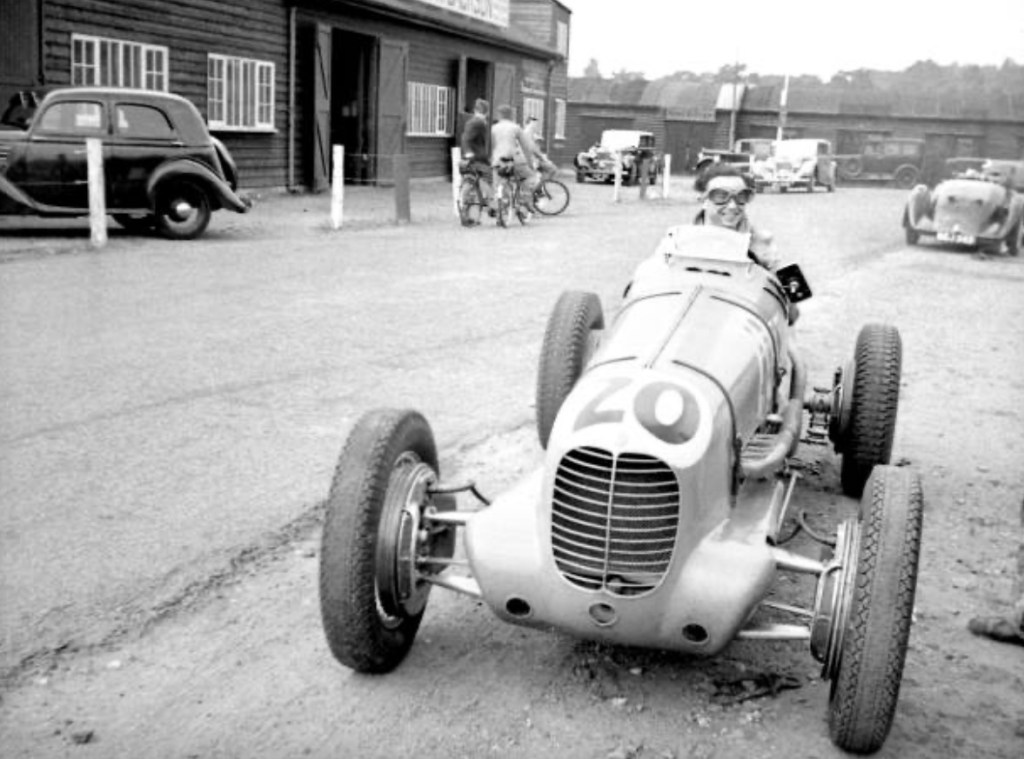
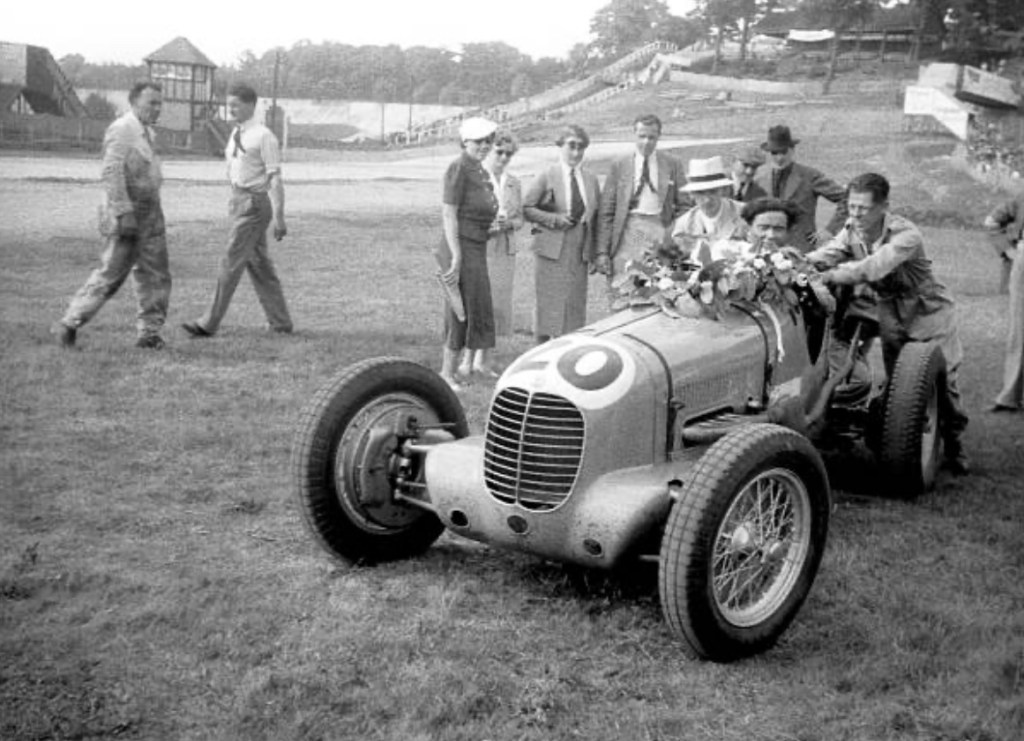
Undaunted, our intrepid adventurer placed an order for an ERA B-Type. Wakefield raced Ian Connell’s B-Type before he took delivery of R14B; in around 20 meetings with the two cars he did exceedingly well, taking three wins, two 2nds and six 3rd placings until May 1939. Johnnie then raced a new Maserati 4CL, chassis #1569 for the balance of that season, again excelling, with wins in the UK, France and Italy. He was a rising star, a man to watch.
As Hitler and his merry band of perverts took on the world, Wakefield signed up with the Royal Navy Volunteer Reserves as a sub-lieutenant in September 1939. From then until 1942 he flew 25 different aircraft in eight squadrons. By March ’42 he had resigned his commission to undertake pilot flying test duties with Vickers Aircraft on Spitfire PR MkIVs.
Johnnie was attached to RAF Aldermaston, one of five hangars where Spitfires were assembled. Wargrave Aerodrome (sometimes called Henley Aerodrome) had no formal control tower and Vickers shared the place with a busy RAF pilot training school. On 24 April, as Wakefield took off in his Spitfire (MkIV BR413) for a production test flight he was confronted by a Miles Magister on a collision course, while he swerved in avoidance as he took off, he crashed. The plane burst into flames and he was killed instantly.
Wakefield was on course as a potential great, the BRDC Gold Star, awarded to the most successful driver of the season, was awarded to him posthumously post-war, his wife Kay received it. The Johnnie Wakefield Trophy, is awarded in his honour to the driver who achieves the fastest race lap of Silverstone each year, to this day.
Back to #1546. The doyen of Australian racing historians, John Medley wrote that “Wakefield’s 6CM Maserati was donated engineless (it was sent back to Maserati for a rebuild) to his mechanic, Rex Tilbrook, a South Australian who imported it to South Australia but refused to pay the customs duty…so it became the ‘box of stones’ in the customs store, rescued but unused by one of the Brooks brothers, and eventually bought by Frank Kleinig for the final version of his Kleinig Hudson Special.”
The short story of the car is in the middle of this piece, rather than repeat it all, click here; https://primotipo.com/2018/10/14/melbourne-motorclassica-12-14-october-2018/
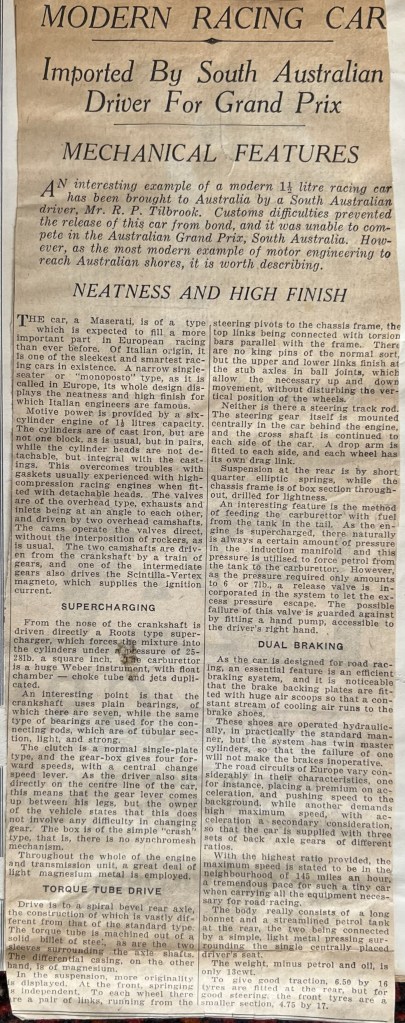
Rex Patterson Tilbrook was a man of immense ambition, an intuitive engineer who left an amazing heritage in motorcycles. An aspiring South Australian racing driver and engine designer, he headed for the UK in 1933 and soon landed a job with Vickers at Brooklands. Before long his capabilities as a mechanic and fabricator were such that he opened his own workshop there. His clientele included some top riders and up-and-comers of the day including Fergus Anderson and Dennis Minett…and some racing drivers such as JP Wakefield.
Disaster struck Tilbrook in 1938 when a failed acetylene gauge caused a fire which gutted his workshop. With the drums-of-war getting louder, Rex opted to return to Australia. He had dreams of motorcycle manufacturing at home and brought six ‘bikes and and an engineless racing car – Wakefield gifted 6CM 1546 to Tilbrook – to sell to raise the working capital for his planned venture. Then the Fiscal Fiend intervened, Australian Customs seized the Maserati to pay for the import duty payable on six motorcycles. See this fabulous article on Rex Tilbrook; https://www.oldbikemag.com.au/remarkable-rex-tilbrook/
The newspaper article above was a catalyst for this piece, it is such a good detailed technical period article on the 6CM. I rather suspect that the journo obtained much of the nitty-gritty from Tilbrook rather than a glossy brochure. The race alluded to was the 1939 Australian Grand Prix held at Lobethal, South Australia on January 2, it was won by Allan Tomlinson’s MG TA Special s/c. Obviously Tilbrook was never going to contest the race ‘coz his nice, one owner, only-driven-on-Sundays Maserati didn’t have a donk under its svelte bonnet.
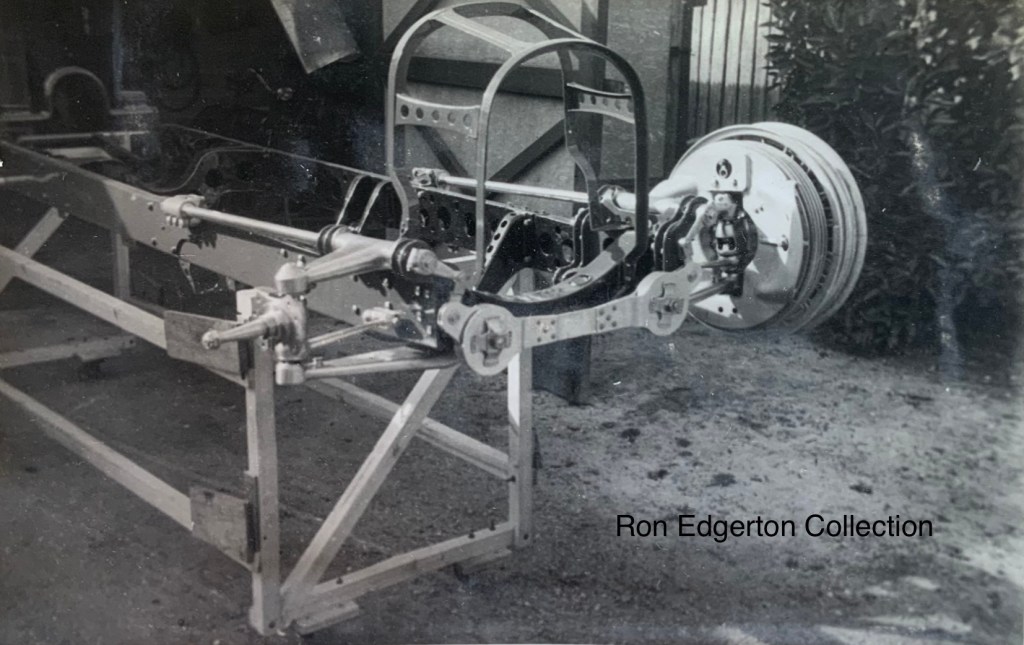

Maserati built 27 6CMs. The six-cylinder 1493cc engine (65x75mm bore/stroke) had cylinders cast in pairs and twin overhead camshafts driven from the nose of the crank. A single Weber was used and Roots type blower, ignition was by Scintilla magneto and the engine was dry-sumped. Power output was quoted initially as 155bhp @ 6200rpm, and later 175bhp @ 6600rpm.
Anthony Pritchard wrote that “The 6CMs were beautifully engineered, almost like a jewelled motion in comparison with the rather crude ERAs, and gave the impression of being Grand Prix cars in miniature. There were times, however, when Maserati cut corners in the standards of assembly and in the main the British owners became unhappy with the performance of their cars.”
There was a big difference in performance, and as Pritchard wrote, sometimes build quality of the works and privateer cars. The compression ratio of works cars was 6.75:1, of British customer cars, 6:1, supercharger size – 140mm blower for works cars, and 130mm for customers. Blower boost of 15-16psi compared with 11-12psi. Whether or not Giacomo the Junior assembled the machine on a Friday afternoon was doubtless a factor too.
The modified four-speed Fiat gearbox was mated to the engine and, being designed for a 34bhp Fiat 532 taxi, was unreliable. This situation wasn’t remedied until Maserati built their own transmissions. The rigid rear axle, made by Isotta Fraschini, was suspended on semi-elliptic springs.

Another bit of intrigue in all of this is that within Racing-Ron Edgerton’s photo collection are some naked shots of a Maserati chassis which looks suspiciously like that of a 6CM…it is 1546 actually.
Ron’s minimal captions include: ‘Maseratti’ (wrong), ‘1 1/2-litre chassis’ (correct) and ‘4CL Maserati (Brooks) Adelaide 1939’. The latter tells us it is the Wakefield car – he got the 4CL bit wrong – albeit the current orthodoxy is that Bill Brooks bought the car from customs in 1943. My suspicion is that Racing Ron made his notes about the photographs decades after the events themselves, the same blue biro he used throughout aids my forensic conclusion. We know from photographs in the Bob Shepherd Maserati Scrapbook – now in historian, David Zeunert’s care – that the car was not taken apart as shown in the chassis shots in 1939. More about Bob Shepherd here; https://primotipo.com/2021/12/03/werrangourt-archive-13-bob-shepherd-artist-extraordinaire/
Edgerton was a businessman who raced on the circuits and speedways throughout Australia; he got around when not many folks did. It’s highly likely he considered purchase of the car and travelled to Adelaide to do so, his high end automotive road and racing car CV is pretty much unmatched in Australia. More about Racing Ron here; https://primotipo.com/2021/03/17/racing-ron-edgerton/
If you read the first link above you will have seen photos of the car in its restored but unused state as below.

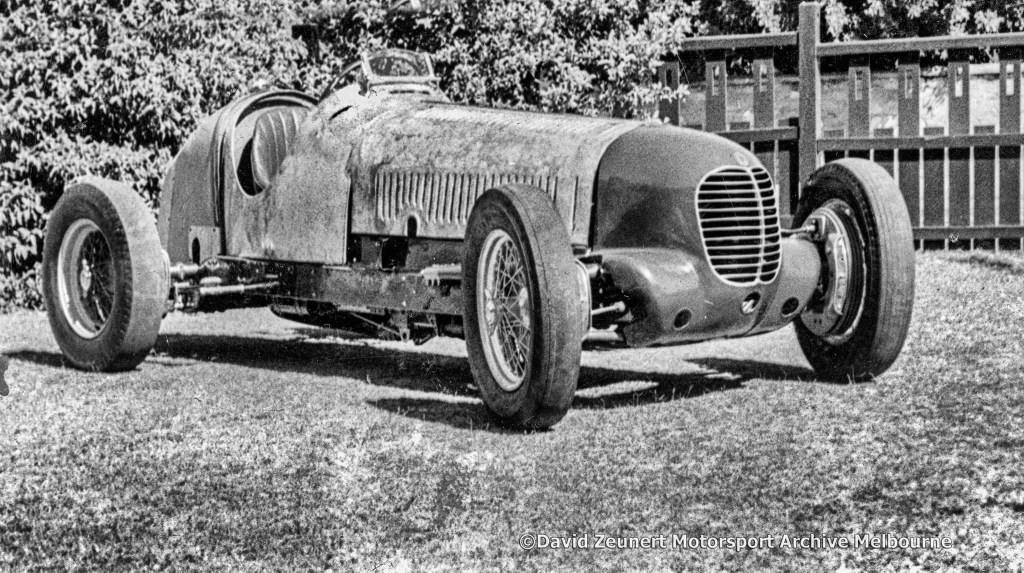
Etcetera…
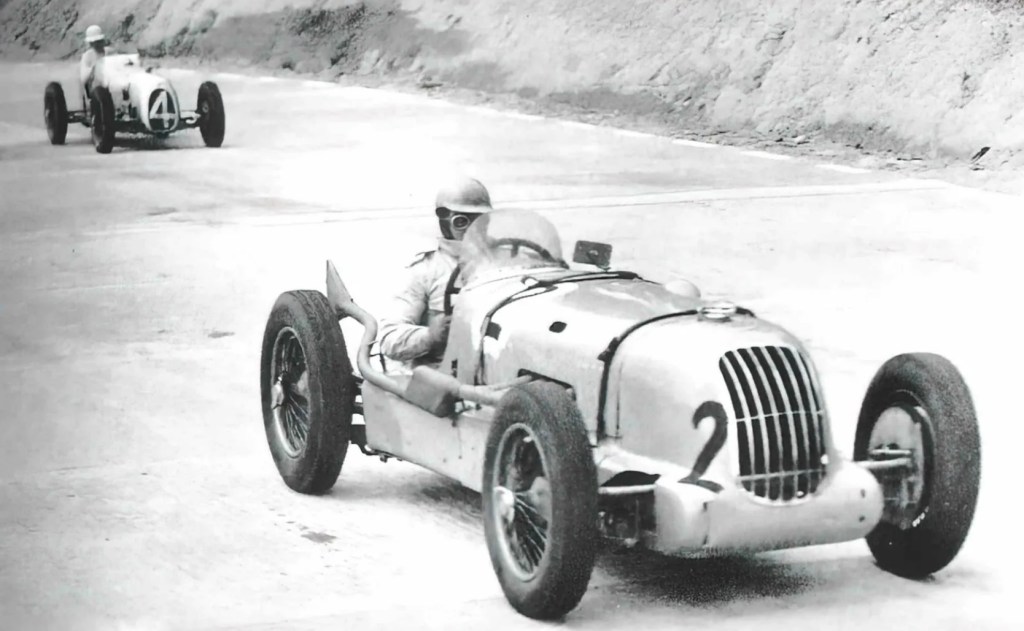
Johnnie Wakefield in his Alta, #56S 1.5-litre s/c at Brooklands. Some lengthy research by Stephen Dalton identifies the meeting as the BARC Brooklands Campbell Circuit Meeting on July 10, 1937. The race is the First Short Handicap and the following car is Kay Petre, Austin s/v.
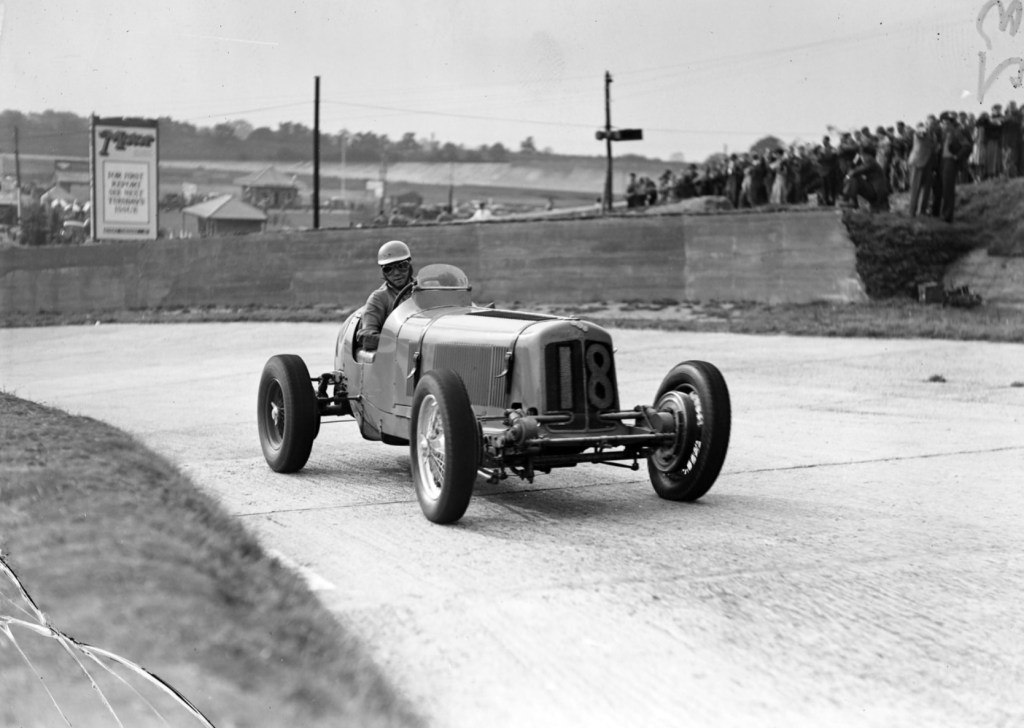
Wakefied at Brooklands during the Junior Car Club 200 Mile Race on August 27, 1938. He had a very successful weekend, winning his first major race in ERA R14B, the last B-Type constructed. Bira was second in his Maserati 8CM 34 seconds adrift, and Earl Howe third in an ERA C-type.

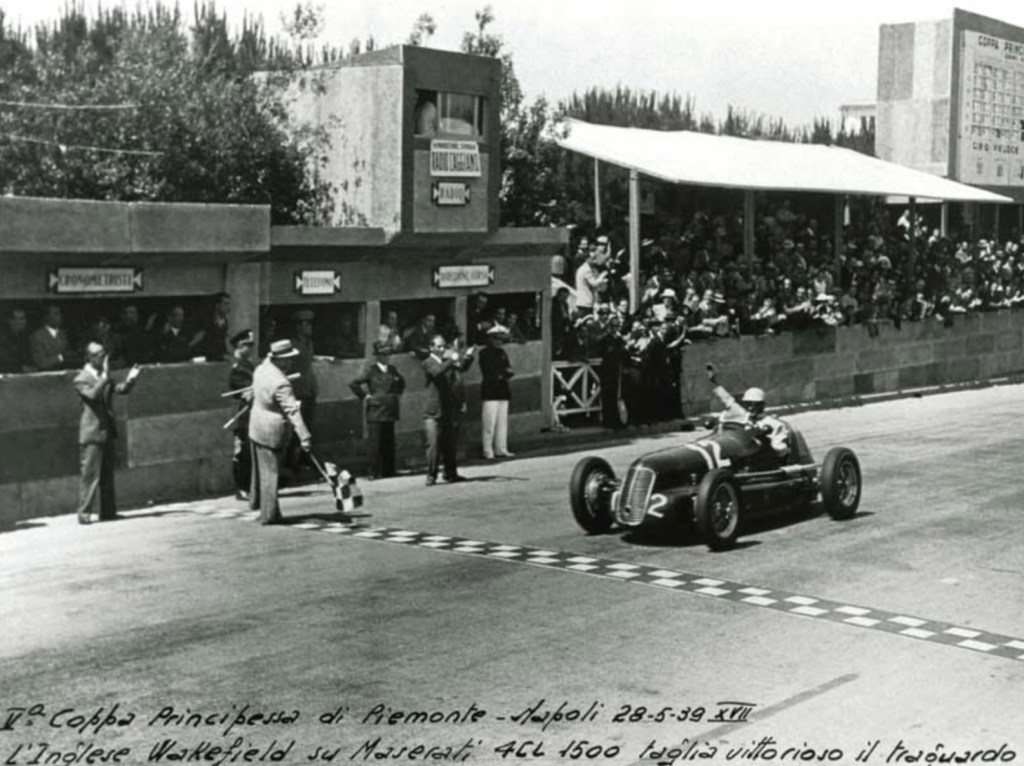
Wakefield surprised the Italians on their home ground by winning the 246km Coppa Principessa di Piemonte at Posillipo, Naples on 28 May, 1939 aboard his Maserati 4CL. In an all Maserati field of 14 cars, Johnnie took a very good win, and fastest lap, from Piero Taruffi aboard a Scuderia Ambrosiana 6CM, and works-4CLs driven by Franco Cortese and Gigi Villoresi.
Wakefield was plenty quick in the final races he contested in 1939. A fortnight after Piemonte he won both races of the GP de Picardie, then led the Sporting Commission Cup, French GP support race at Reims on July 9 until his brakes faded, finishing second behind Armand Hug, Maserati 4CM. Off to Albi on July 16 he was victorious in front of Reggie Tongue, Maserati 4CL and Bira, ERA B-Type – then won again in the second race. At Berne Johnnie was third in the Voiturette heat and third in the Voiturette class of the Swiss Grand Prix with Giuseppe Farina and Clemente Biondetti’s Alfa 158s the class of the 1.5-litre field.
Wakefield really looked the goods as the dark years approached.
MotorSport in their September 1940 issue quote a power output of 200bhp @7000rpm for the “short stroke, square” 16-valve four-cylinder 4CL, the Alfa Romeo 158 straight-eight at 195-210bhp @ 7000rpm, the ERA E-Type 220-250bhp @ 8000rpm, and Mercedes Benz W165 V8 250bhp @ 10000rpm; all engines were supercharged.

More #1546…
Bill Brooks with #1546 as bought from Australian Customs circa 1943. It looks shite, is it as crashed at Cork, less engine? Or was the machine subject to some repair prior to being given to Tilbrook?

This series are as purchased by Tom Roberts prior to the restoration work of David Rapley.

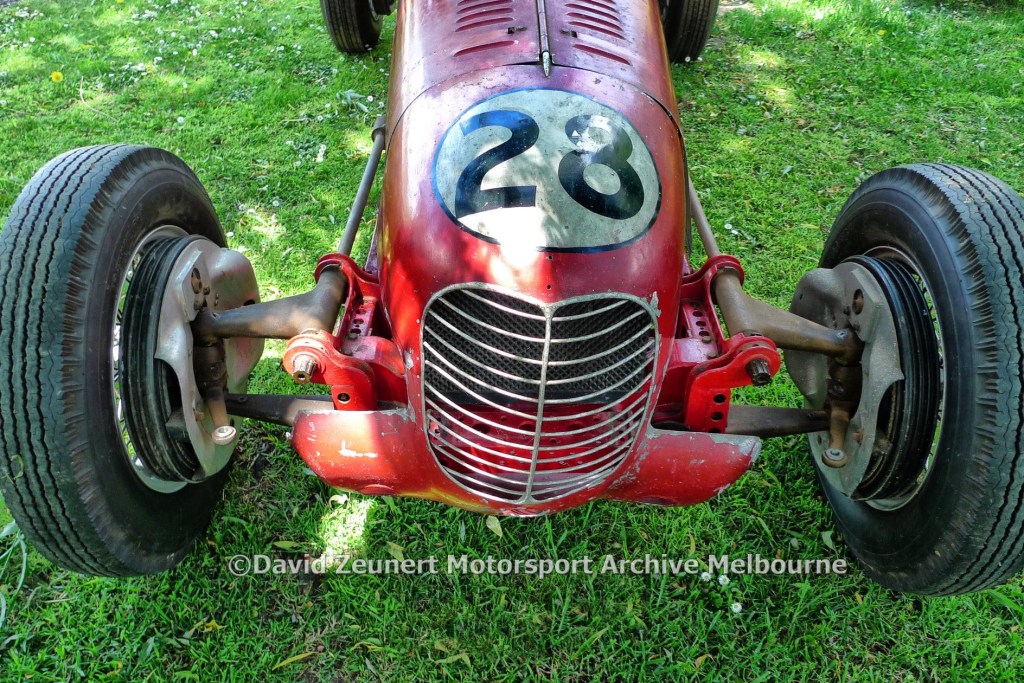
Credits…
Cameron McLaren’s Rumblings, ‘Maserati : A Racing History’ Anthony Pritchard, Society of Automotive Historians in Britain, Bob Shepherd Collection via David Zeunert, David Zeunert Collection, BRDC Speed Magazine August 1937 via the Stephen Dalton Collection
Tailpiece…

I love scrap-books, Cam McLaren’s is far more posh than mine too. He lists his address at the time – wartime I guess – as ‘Sub/Lieut C.S. McLaren, 456 Glen Eira Road, Caulfield’ in Melbourne. More about McLaren here, can anybody tell us more? https://primotipo.com/2019/12/20/tooronga-park-light-car-racing/
Finito…